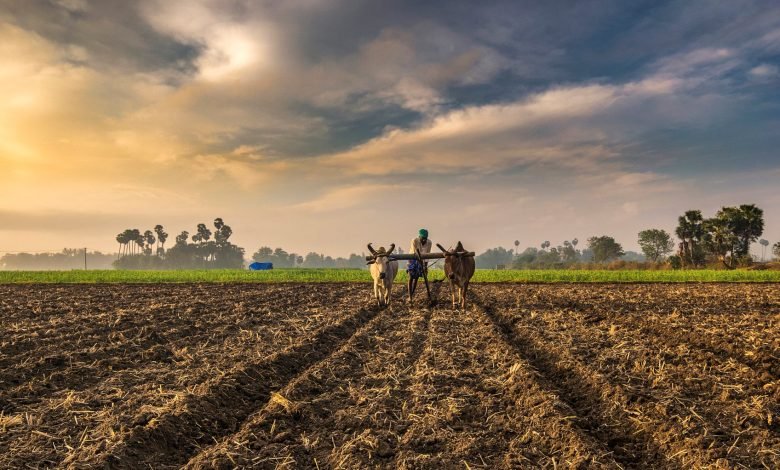
As we all know, the importance of farming in India. According to Indians, agriculture is the only thing that connects us to the soil. So farming is the most vital field in India. And if we are talking about worldwide, India is in 74th rank out of 113 countries in agricultural industries. India export agricultural food to more than 120 countries.
Yes, farmers are the backbone of the agricultural sector. Because it helps to maintain the economy of India. And also, it is beneficial for the environment. Farmers can grow different types of crops with the help of several kinds of farming methods.
9 Types of Farming Methods in India
Let’s discuss the below section about farming methods and their importance.
Primitive Subsistence Farming
Subsistence farming is an ancient farming type method that comes from our ancestors. In this type of agriculture, crops are cultivated to fulfil the living needs of farmers and not for sale. Farmers use a low level of technology, and household labour is enough for cultivation. Subsistence farming is done in West Bengal, Kerala, and Tamil Nadu.
Advantages
- It is affordable for farmers and Organic farming.
Commercial Farming
Commercial farming is performed for commercial purposes. This farming type requires considerable capital with a large area. Because it needs suitable irrigation methods and advanced technologies. Commercial agriculture is practised in urban places such as Maharashtra, Haryana, Gujarat, Punjab, etc. In large farming land, farmers choose an excellent tractor as we know there are several tractor models, but farmers choose the Mahindra Novo tractor model for productive agriculture.
Advantages
- Supporting Growth in Local Infrastructure.
- Decreasing the prices of products and producing prices.
- Improved food safety and increased productivity.
- Earns different currency.
Dry Farming
Another name of dry farming is dryland farming. This farming done in the growing crops entirely under rainfed conditions. It absorbs the maximum quantity of water in the soil without an additional water supply. Cultivate crops in areas where rainfall is less than 750 mm per annum. Soil moisture is low in dryland farming. In India, this type of farming is mainly done in Gujarat, Madhya Pradesh, Rajasthan and Maharashtra.
Advantages
- The increased short-term profits for farmers.
- Increase in crop production and soil organic matter.
- Minimize soil erosion.
- Improve dryland agriculture’s long-term viability and productivity.
Wet Farming
Wet farming depends on rainfall. Therefore, where water is available throughout the year is call wet farming. Mango, Guava, Rose, Pomegranate and many more are examples of wet farming. This farming category is expect in the North, North-Eastern, Eastern India, and the Western slopes of the Western Ghats.
Advantages
- The crop yield is high.
- It helps the farmer manage and observe the land and guard it against endangered wild animals.
Shifting Farming
Shifting farming is done on a piece of land for a temporary period, and after that, it would be abandoned. This farming is mainly done in Arunachal Pradesh, Mizoram, Meghalaya, Nagaland and other places. Cotton, rice, maize are some examples of shifting agriculture.
Advantages
- It is a straightforward and fast development method for land and farming.
Plantation Farming
In Plantation farming, farmers grow single crops the whole year. In this kind of farming, farmers require a large amount of capital and labour. For commercial purposes, it needs a transport network to export crops all over India. And for better fieldwork, farmers choose the Mahindra YUVO tractor model to enhance soil fertility. Karnataka, Haryana, Bihar and many places where this farming is practise.
Advantages
- More job possibilities for the local people.
- It origin an income for a country.
- Crops are produce on a large scale.
- Large estates are arranged logically and economically.
Intensive Farming
Intensive agriculture is a type of farming where cultivation is complete on a large scale and keeping maximum livestock. It aims to get maximum yield from the available land. Intensive agriculture is complete in Kerala, West Bengal, coastal Andhra Pradesh, and Tamil Nadu in India.
Advantages
- The farm yield is particularly important.
- Management of the land grows easier.
- Fruits and vegetables are less costly in intensive farming methods.
Mixed and Multiple Farming
Mixed farming known for crop growing combined with raising livestock. In this farming, farmers do not need to depend on others. Mixed farming usually practised in Kerala and Odisha.
Advantages
- Farmers can sustain regular production in their fields.
- It improves the productivity of the farmland and farmer per head profitability.
- Decreases the dependence on external inputs and costs.
Vertical Farming
In vertical farming, crops are cultivate in vertical positions, taking less space and giving maximum production. It helps to save space and use minimal energy and water for irrigation. Vertical farming in India is mainly practise in New Delhi, Mumbai, Kolkata, and Chennai without soil or pesticides.
Advantages
- Ensures Consistent Crop productivity.
- Uses Space Optimally.
- Decreases the Usage of Water.
- Pull down on Transport Cost.
- Labour Costs is Less and energy productivity.
For a more detailed blog, stay connected with us. And wait for our next blog.



